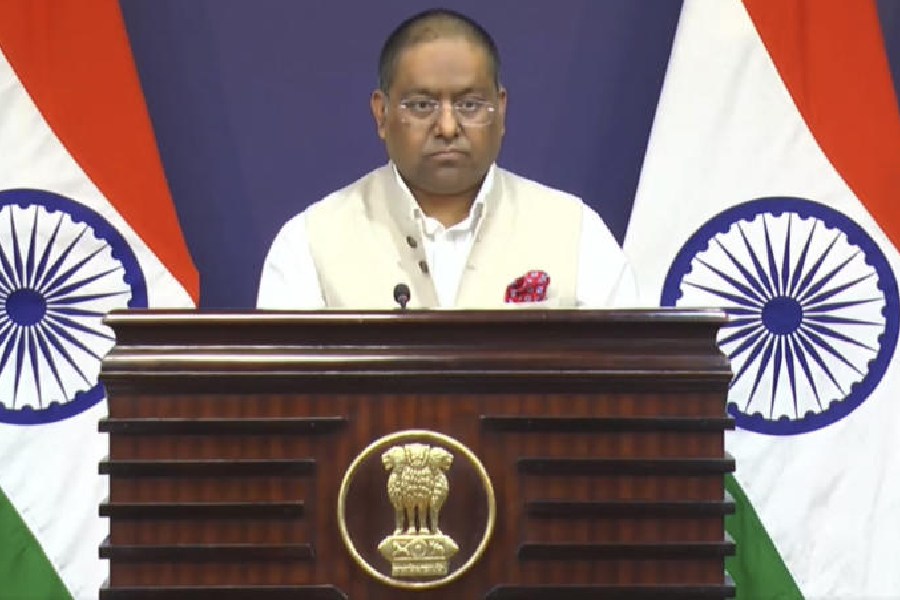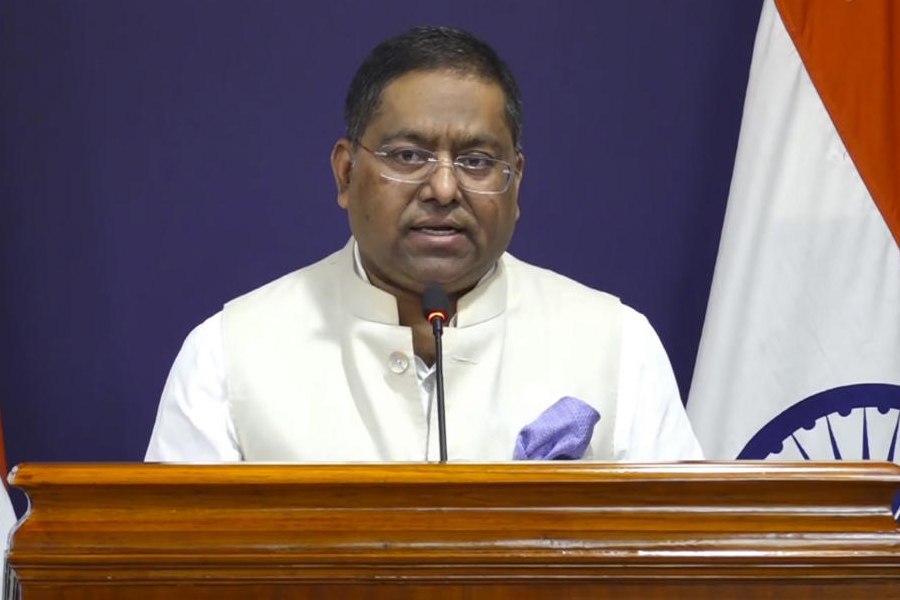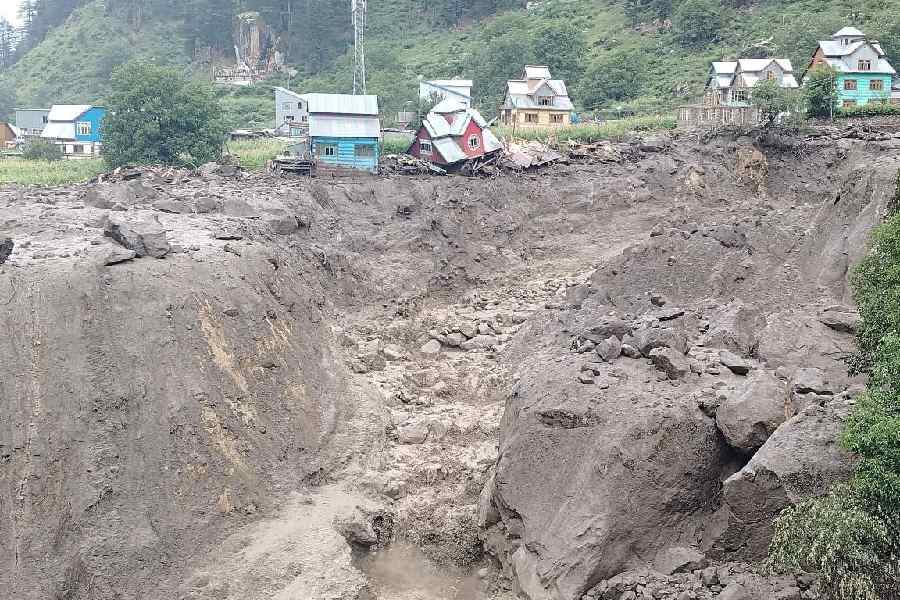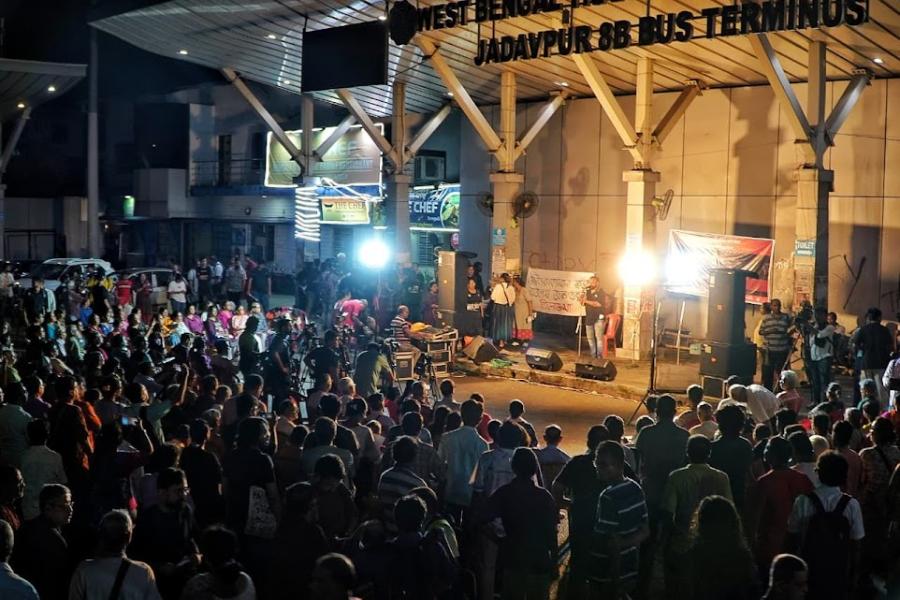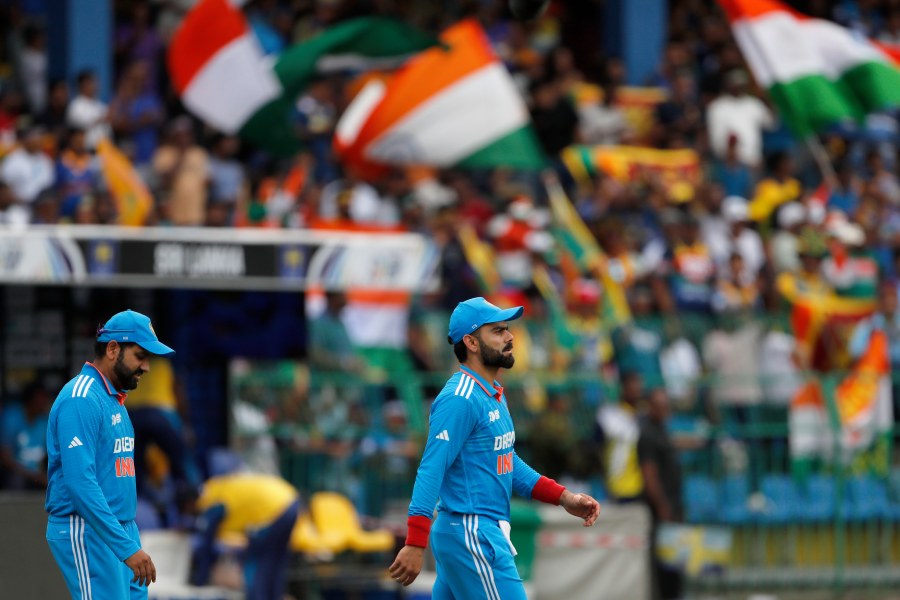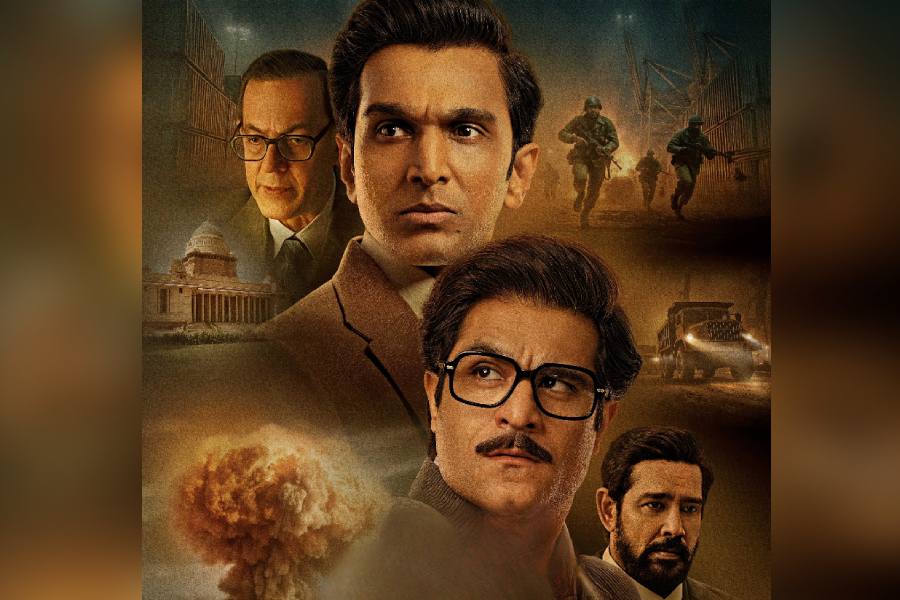 |
 |
 |
| Sarees on display at Boyanika’s annual exhibition in New Delhi before Diwali at Orissa Bhavan. Pictures by Prem Singh |
New Delhi, Nov. 3: Former Prime Minister Indira Gandhi made them a style statement. She wore these sarees on a trip to the US when Ronald Reagan was at the helm, making quite a splash in the western press. Sambalpuri sarees— named after the region of its origin in Orissa— are also a favourite with her daughter-in-law Sonia Gandhi.
She never ever forgets to don them on her not-too-frequent visits to Orissa. Like Indira Gandhi, Sonia too wears local weaves to strike a chord with voters wherever she goes in this diverse country.
National broadcaster Doordarshan too took the cue by making these bright-coloured weaves from Orissa the unofficial uniform of sorts for all its newsreaders.
Since then, the wardrobe of a discerning collector of sarees is not complete if it doesn’t have Orissa’s famous six yards — ikat, bomkai, passapalli or kotpad.
The fluorescent ikats and bomkais are produced mostly in Sonepur, the heavy, earthy kotpads in tribal Koraput district and from Nuapatna comes the khandua pata sarees. The sarees produced by the weaver clusters in Sambalpur and Barpalli in Baragarh districts are also well known.
Sourcing these sarees was difficult in the initial years. Indira and Sonia of course always had it easy.
They got the pick of the lot when they went out to campaign in the areas where they were produced, sometimes buying it straight from the weaver.
Pupul Jaykar, who worked among the artisans, handpicked some of Indira’s sarees. Their wardrobes added ambitious value to these sarees. More and more women wanted them in their closets.
But for decades one could get these sarees only in one place in Delhi — Utkalika — the outlet of the Orissa State Cooperative Handicraft Corporation Limited, which opened in 1974.
“Though the corporation was set up in 1959, it opened shop in Delhi only later,” said manager D.K. Sahu. Former Orissa chief minister Nandini Satpathy, who also loved these sarees, had inaugurated it, he said.
President Pratibha Patil and Prime Minister Manmohan Singh’s wife Gursharan Kaur are among its patrons now. Showrooms in Calcutta and several other cities such as Bangalore followed. Mumbai is the latest to get an Utkalika outlet.
One could of course buy them at exorbitant rates from other private suppliers, with no guarantee of quality. Boyanika, on the other hand, started off late.
The Palika Bazar showroom of the Orissa State Handloom Weaver’s Cooperative Society was thrown open in 1998. Boyanika also began selling from another outlet in Bhikaji Cama, said Debaraj Sahu, the Bhubaneswar-based general manager-cum-secretary of the society. But the sales figures have been enough to start thinking of another one. They now propose to open a new one at the all-time tourist favourite, Janpath.
In an effort to popularise these sarees, Boyanika also holds an annual exhibition every year pre-Diwali in Delhi’s Orissa Bhavan. This year it was held from October 20 to November 4.
Boyanika’s additional manager, Berhampur, P.K. Prusty, on deputation here at the exhibition said sales were brisk. “Sales clocked some 17 to 18 lakh in the first few days,” he said.
Although one could get these sarees, suits and dupattas at their local outlet, the exhibition was promotional in several ways.
“We offer a thirty per cent discount to all visitors,” Prusty said. “Besides, we showcase, the sarees created by award-winning artisans, at this event,” he said.
Almost all of them were unique pieces — one of a kind produced by an artisan, never to be repeated again, he said.





